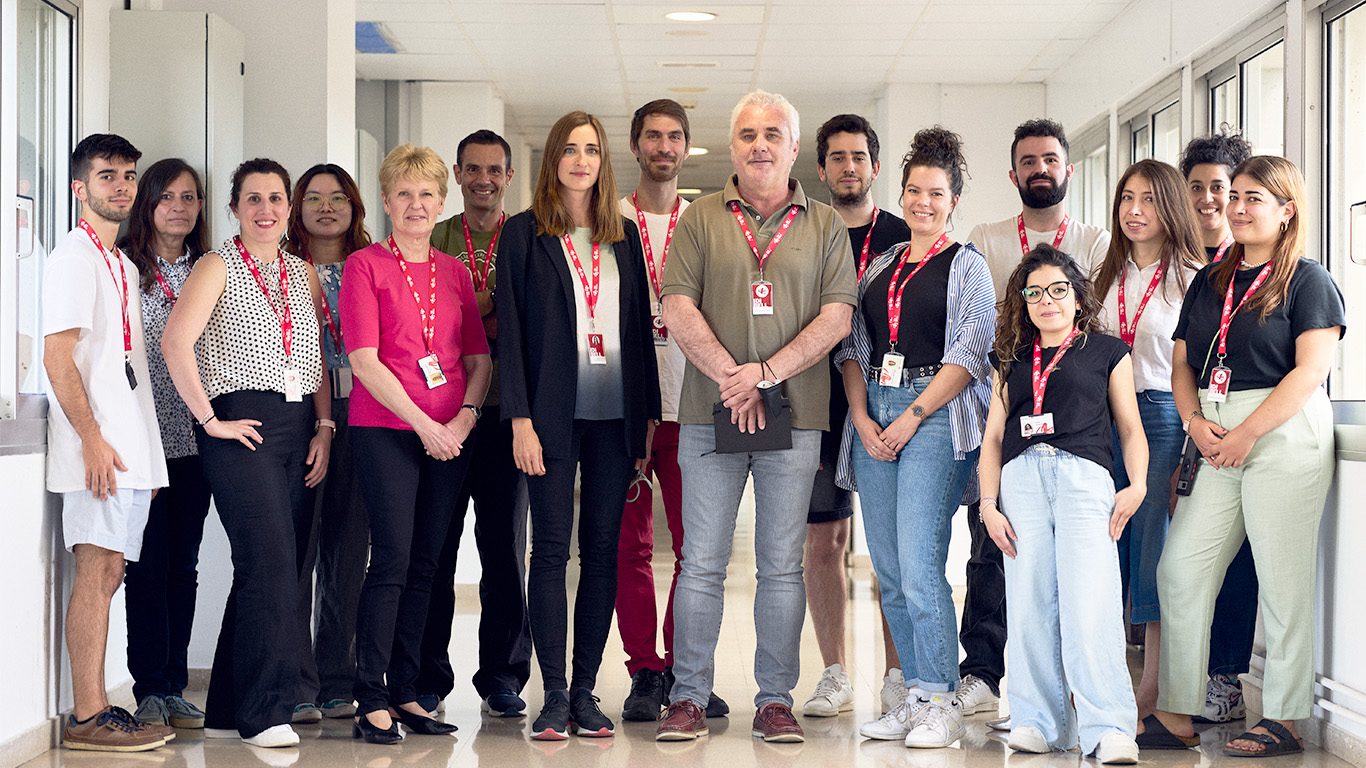A heart stem cell-based model reveals why the same mutation affects two siblings with heart disease differently
July 11, 2023
- Thanks to the model, the IDIBELL team detected that one of the siblings had an additional genetic variant responsible for the greater severity of the pathology.
- These models offer the possibility of exploring each patient’s pathology and designing an individualized approach.

Not only one mutation defines a disease, many other factors intervene and make each patient different. A clear example is the case of two siblings affected by hypertrophic cardiomyopathy, the most common hereditary heart disease. Both carry the same disease-causing mutation, but one has much more severe cardiomyopathy than the other. To explain these differences, a team from the Bellvitge Biomedical Research Institute (IDIBELL) generated a cell heart model from stem cells from the two siblings.
The work carried out in collaboration with researchers from the Family Heart Disease Unit of the University Hospital Complex of A Coruña, the Josep Trueta Hospital in Girona, and the National Center for Cardiovascular Research (CNIC), has been published in the scientific journal Circulation Research and shows that the greater severity of heart disease in one of the siblings is due to a genetic variant, additional to the original mutation, only present in him. Thanks to the model, they can find the cause of the most severe pathology, avoiding big epidemiological studies with a much larger patient number and investing much more time and money.
“Knowing the individual genetic variants responsible for each of the pathological manifestations is the first step to find the most effective treatment for that specific patient,” explains Dr. Ángel Raya, project leader, who is an ICREA Research Professor at IDIBELL, where he coordinates the Regenerative Medicine Program, and director of the Clinical Translation Program of Regenerative Medicine of Catalonia (P-CMR[C]). “We can modify the genes of the heart model, interrogate them directly to decipher which variant is responsible for the most severe pathology of one of the siblings“, adds Dr. Rubén Escribá, first author of the work.
Siblings’ hearts in the laboratory
To generate the model, the team extracted a skin biopsy of each sibling. The cells of the skin were transformed into stem cells that later were differentiated into cardiomyocytes, heart cells. In culture, these cells are capable of beating spontaneously.
The IDIBELL team took advantage of the latest CRISPR gene editing tools to identify the genetic variants of each sibling and play adding or removing them in the heart model to resolve which ones were responsible for each pathological manifestation.
The researchers found that the most severely affected sibling was the only one with an additional genetic variant to the original mutation that caused his cells to contract incorrectly. The different functional tests with the heart model showed that this variant was responsible for more serious clinical manifestations. “This type of model allows us to get closer to personalized medicine -says Dr. Raya, who is also a member of the Center for Biomedical Network Research in Biomaterials and Nanomedicine (CIBER-BBN)- analyzing each case in depth and offering a more effective individualized treatment with fewer unwanted side effects”.

